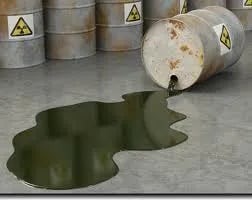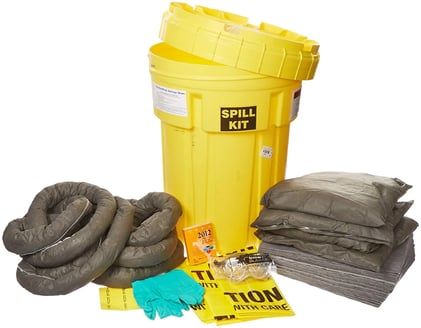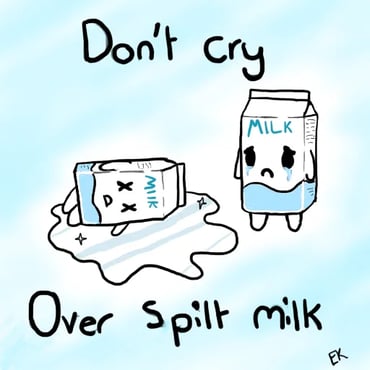Emergency Spill Control
This photo is the stuff of nightmares for someone like me who is a little OCD and most definitely is a wash-as-I-go kind of person when I’m cooking. I’m sure Gordon Ramsay would have a thing or two to say about a kitchen like this, it may even make it onto his Kitchen Nightmares! However, my other half is a use every pot, pan, utensil going and don’t worry about the mess. Mess and spills in the kitchen can be inevitable (especially with a one-year old throwing food and drink about!). Even at work spills will happen as it’s tricky to eliminate carelessness, lapses of attention or even just bad luck. This week’s Toolbox Talk is all about spills at work and how to control them.

Spills can cause untold damage to the environment, animals and humans and create costly clean-ups and the accidental release of fuels, oils and chemicals make up a large proportion of annual pollution incidents. The issues with spills include the spill entering the watercourse or drain and causing surface water pollution, contamination of the ground or groundwater, contamination of drinking water, slippery surfaces for staff and customers, possible fire hazards and the fumes from the spill. The HSE guidance on slips and trips makes one thing very clear, ‘’clean up spills immediately’’. This also includes any incidental spills; those nuisance leaks, drips and little oopsy-daisy moments; even if it doesn’t pose any noticeable risks, it must be cleaned up. A risk-assessment should highlight any potential areas of harm and suitable spill kits should be placed in accordance with your findings and safety review timetables should be put in place.

A great acronym to remember when it comes to spills is SPAR (not the boxing variety)! Spar stands for Stop, Protect, Attack and Report and will help ensure everyone knows how to control a spill, what equipment is available and where it is. When you notice a spill you must immediately but safely STOP what you are doing and check whether the spill is incidental or whether it creates an emergency situation. It is also important to consider whether it is safe for you to clean up the spill. Next you need to think about PROTECTION both for yourself in terms of PPE and for the environment for example protecting sensitive areas like drains, electric panels or checking whether the spill is flammable and if there are potential heat/ignition sources nearby. Next would be time to ATTACK, by this I mean contain the spill through use of absorbents, vacuums, socks, granules, pillows or wipes which may be part of a spill kit. Spill kits are crucial in pollution prevention schemes and include sealant for damaged and leaking tanks and drums, drain sealing mats, protective gloves, googles and disposal bags. Absorbents are colour coded as per BSI regulations with light blue/white for oil-selective absorbents, yellow for chemical absorbents and grey for maintenance absorbents. It is important to act quickly to stop the spill spreading and to seal the source as well as sealing drains/water sources. You should also warn any colleagues around you to prevent any slips, trips or falls. The final stage of the spill procedure is to REPORT the spill, even if it’s only small as the spill kit will need to be replenished and necessary reports will need to be completed.

When it comes to spills, never put yourself in danger of exposure to harm from spills you cannot identify. Never hose down or bury spills, do not allow spilt materials to enter a drain, gully or watercourse and do not store harmful materials near such places. Proper planning and care can prevent a lot of spillages but if a spill should occur just remember to SPAR (Stop, Protect, Attack and Report) and you won’t be crying over any spilt milk or anything else!

